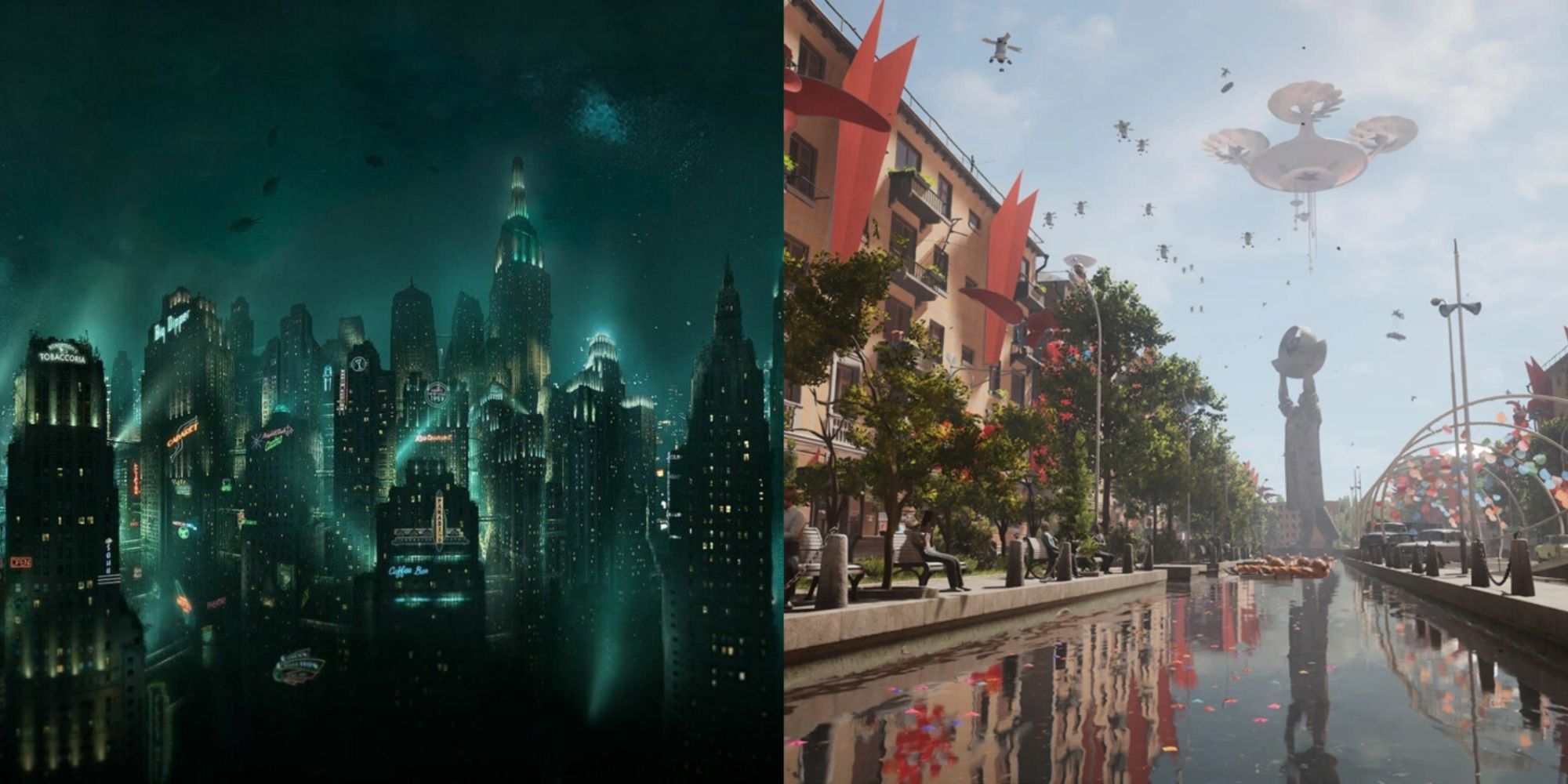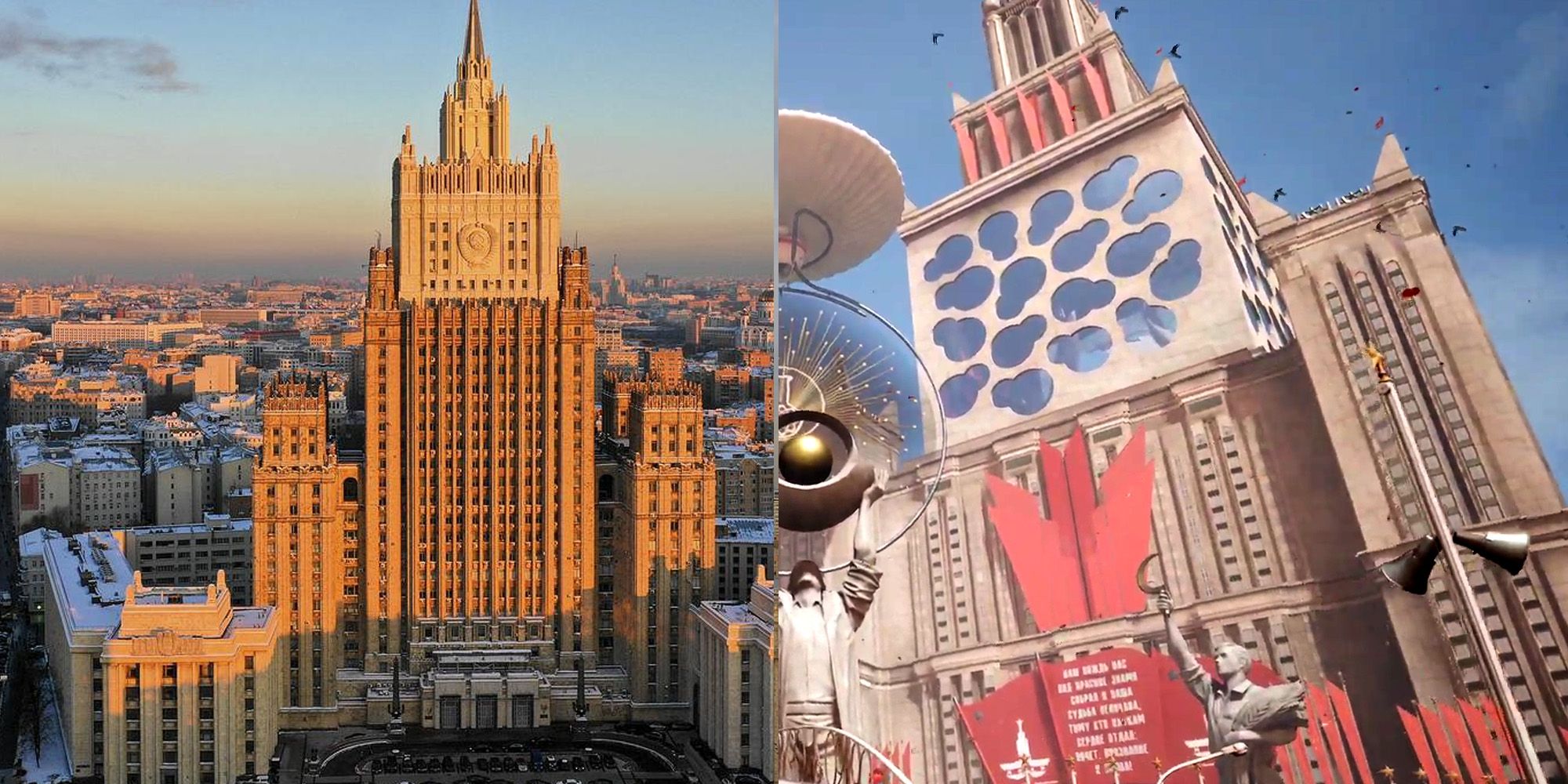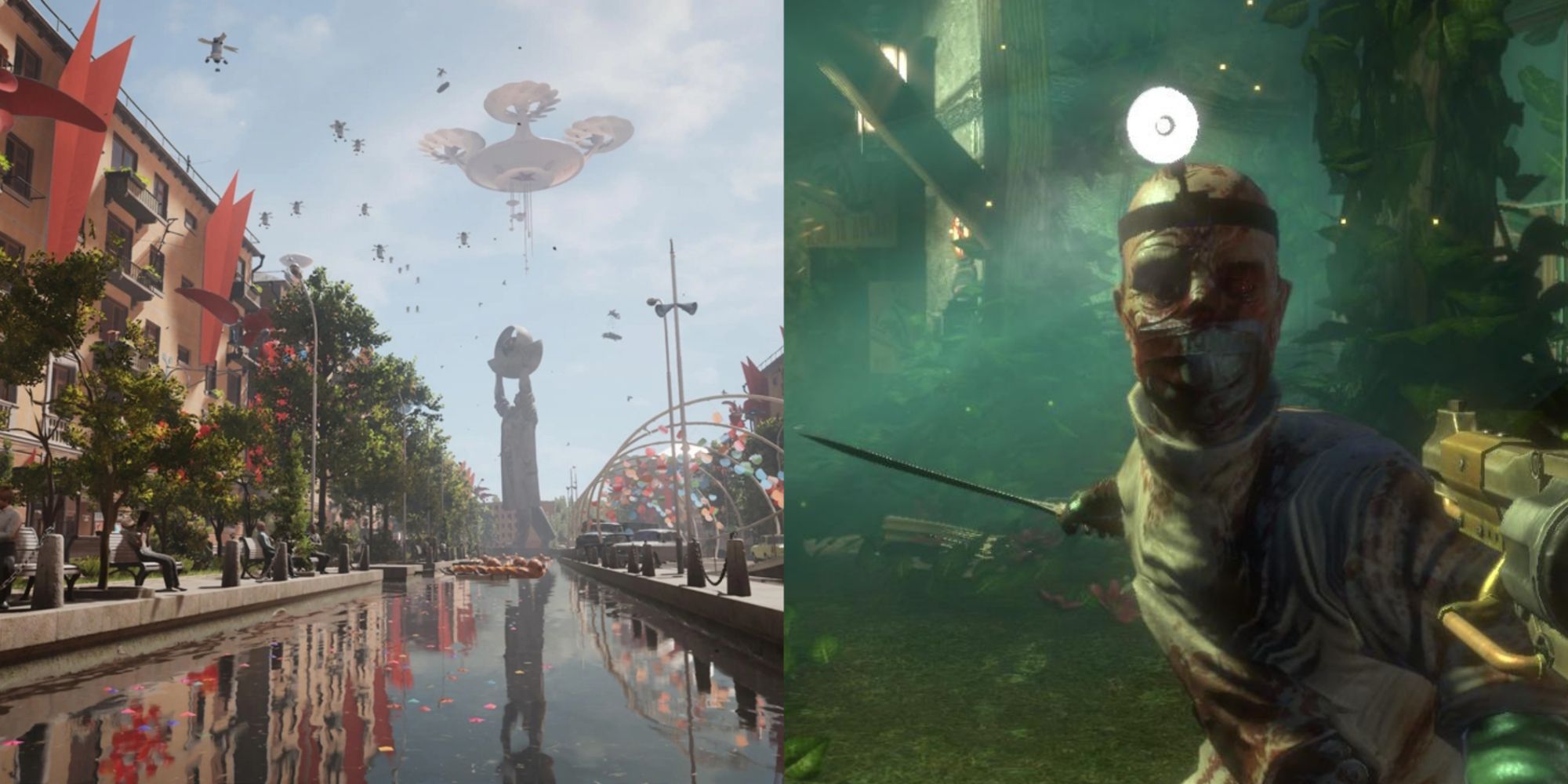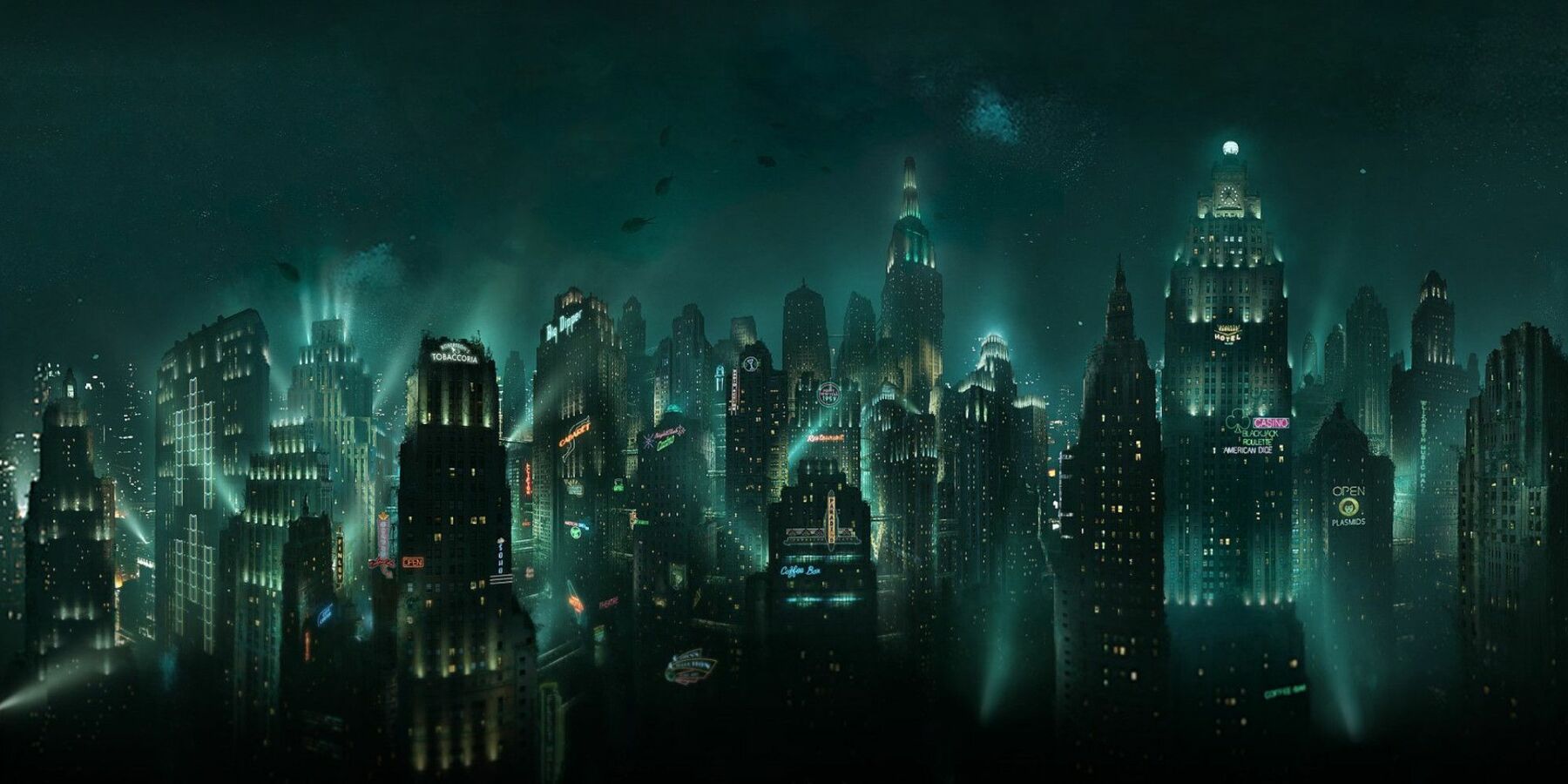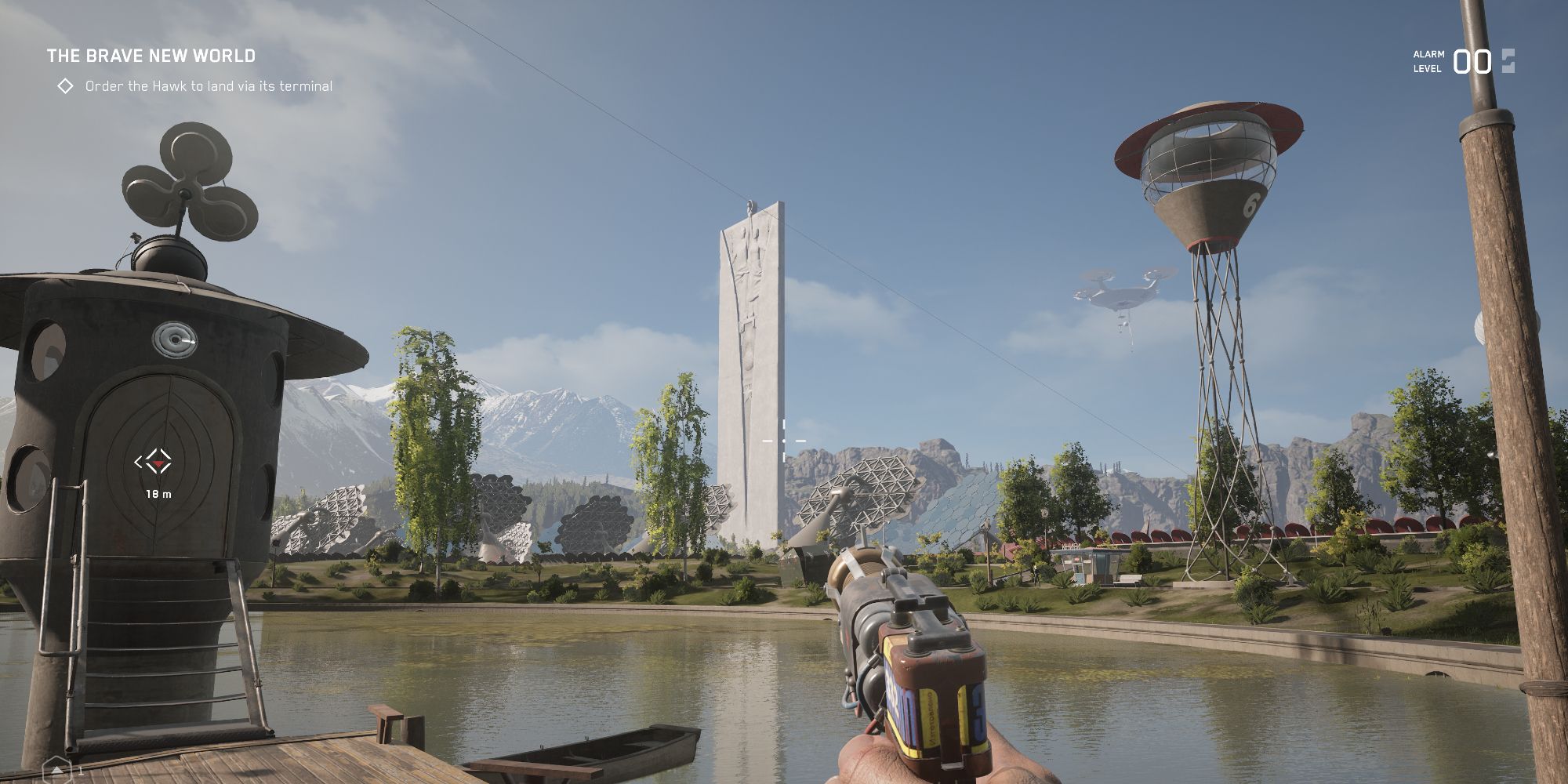It's been said countless times that the newly released Atomic Heart is a sort of "Soviet BioShock" – a spiritual successor to the beloved sci-fi action, horror FPS franchise that first launched in 2007. In fairness, this label rings true in several ways, be it the former's approach to abilities and weapons (along with their upgrades), as well as the choice to set the game in an alternate history, retro-futuristic utopia.
Atomic Heart, however, does much to set itself apart from the BioShock franchise. In fact, there is an argument to be made that referring to Atomic Heart as merely a Russian-themed imitation of BioShock is a somewhat reductive take on either game. Here are some of the key ways that the two games diverge from one another.
5 Soviet Cultural Iconography
Whereas BioShock is mostly a reflection of 50s and 60s American cultural iconography, Atomic Heart is entirely based within the Soviet Union during the 1950s. As such, it has a striking and unique visual style that few games, if any, have had before. This is easily the most obvious difference between the two games, and it is one of the reasons that Atomic Heart is so often referred to as "Russian BioShock" despite it being a bit of a poor summation.
This cultural framing doesn't just end with visuals either. Most of the characters address each other in typical Soviet fashion as "comrade," and they will often espouse communist views or position their way of life as directly opposite to the Western world and its principles. One of the game's villains is accused numerous times of being a capitalist sellout and a western collaborator. All of this is to say, Atomic Heart functions as a great mirror to BioShock in this regard.
4 Action Horror Vs... Well, Plain Old Action
Atomic Heart may have teased a more action horror-style approach when it was first teased all the way back in 2017, but it could hardly be referred to as such upon release. BioShock, on the other hand, is kind of the poster child for action horror FPS games, with the darkened and crumbling halls of Rapture providing a sufficiently spooky atmosphere.
Atomic Heart is bloody, but even the more twisted enemy types (of which there are few) are presented in a much less grim fashion. Robots in particular, which constitute the majority of the game's enemies, are downright silly looking. Facility 3826 is also rather bright and colorful, enough to dull any sense of shock or horror at the various bloodstains and corpses that litter certain parts of the environment.
3 A Lack of Political Satire
One of the things that help to inform BioShock's world-building is that it is a scathing indictment of the freedom absolutist mindset by design. Taking aim at works such as Atlas Shrugged, Rapture was never built to last because it never could be made to last to begin with, this being one of the fundamental messages of the game's story; there is no such thing as a utopian society.
With Atomic Heart, the game thoroughly sidesteps broader political implications. If anything, it comes down somewhat light on the Soviet form of governance, not even addressing infamous dictators such as Joseph Stalin or Nikita Khrushchev who lived around the time the game takes place. The failure of this polymer utopia has nothing to do with the flaws in Soviet or Communist ideology, rather, it unravels primarily due to outside influences.
2 Atomic Heart is a Semi-Open World
It seems as though every single-player AAA game these days has to be some form of open-world, and Atomic Heart isn't all that different. While its best moments lie in its more linear sequences, the game features a rather beautiful world for the player to explore (with some limitations) either on foot or in a vehicle. It's not quite Fallout levels of freedom, as the player can only backtrack so far, but it is far more open than BioShock is.
BioShock is mostly a linear FPS, though it allows for a little bit of exploration during segments. There are rumors of a fourth BioShock featuring an open-world, but as it stands this is a clear point of deviation between it and Atomic Heart.
1 Differing Styles of Humor
One point of controversy for Atomic Heart has been its particular brand of humor. Some have criticized it for being juvenile or even outright cringeworthy, though others seem to be having a good time with the game's wacky nature. BioShock, however, is mostly satirical rather than jokey.
The themes presented in the game are done so in a rather serious manner, with the tense atmosphere never really suffering from quick gags. Certain real-world ideas are lambasted but not necessarily in an outwardly comedic way, unlike Atomic Heart, which is very heavy-handed with its comedy. It also features quite a bit of sexual innuendo woven into the experience that simply does not exist in BioShock. The most obvious is the upgrade machine NORA, though there are plenty of other examples.
Atomic Heart is available now for PC, PS4, PS5, Xbox One, and Xbox Series X|S.

